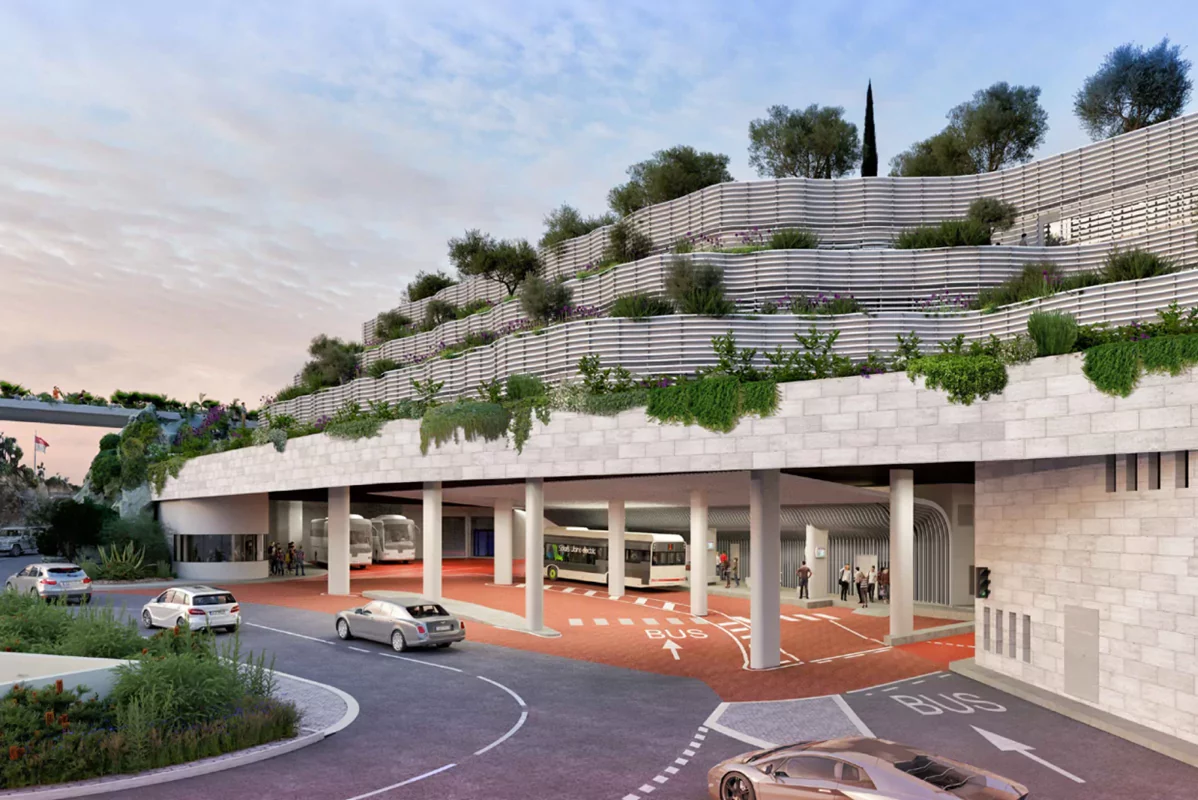With backed-up traffic and heavily congested roads, getting in and out of Monaco is no simple task for the nearly 50,000 commuters who take the same overcrowded routes every day. Now, after years of studies, reports and public surveys, the Monaco Government says it has a solution that could alleviate the woes of drivers who feel like adding ‘navigation of a gridlocked road’ to their CV.
It is estimated that more than 49,000 vehicles enter and leave Monaco each day, with that number rising considerably during the high season.
Even at its lowest ebb, the figure more than matches the number of permanent residents living in the Principality, which, at just 2km2 in size, is the second smallest nation in the world.
But despite the near constant gridlocks and jams experienced by Monaco’s commuters, both in and out, the number of vehicles on the road is actually decreasing. Traffic hit its peak in 2015, when the Principality clocked close to 54,000 vehicles entering and leaves its borders. By 2023, that figure fell by 7%, but the government wants to bring this down even more, with a goal to reduce traffic by a full 20% by the end of the decade.
How the government plans on achieving that lofty goal has now been revealed, with the publication of a comprehensive ‘Plan Mobilité’ report. Let’s call it the ‘Transport Solutions’ strategy.
Outside looking in, inside looking out
The Monaco Government is looking at its traffic issues from two standpoints: the vehicles that are travelling in and out of the Principality each day, and the vehicles that are owned by people already based in Monaco.
The latter can be targeted through improved public transport networks, the expansion of services such as the MonaBike initiative and general awareness campaigns championing the act of walking or cycling instead of using a car to get about, but the former is perhaps harder to influence.
External factors
In many ways, Monaco is accessible. It can take around 45 minutes by car to travel from the Nice Côte d’Azur Airport if the traffic is good, while 7.8 million rail passengers arrived in Monaco by train in 2023. But its geographical placement, as a slice of land between the Mediterranean Sea and the cliffs that hem the Principality to the north, make road access somewhat limited.
Essentially, those driving into Monaco have only a handful of routes to choose from and all of them are busy.
Park and Ride
One of the main strategies unveiled in the Transport Solutions report unveiled on Friday 9th February is a plan to increase the number of Park and Ride facilities available to commuters and tourists.
Currently, there are 4,000 carparking spaces for cars and other light vehicles on the periphery of Monaco. Additionally, 3,000 spaces are available in Park and Ride facilities nearby.
By the end of April 2024, a further 1,800 spaces for cars and 90 for motorcycles will become available at the new Salines Park and Ride site in the Jardin Exotique neighbourhood of Monaco.
Electric vehicles – 100 cars and 15 motorcycles – will be catered for as well as tourist buses and secured padlock points for more than 60 bicycles.
Express shuttle services every 10 minutes between Salines, the Monte-Carlo district and the Condamine neighbourhood will be put in place between 7am and 7pm from Mondays through to Fridays. They will complement the existing Ligne 2 from the Jardin Exotique to Monaco Ville so that there is some form of bus connection departing the new Park and Ride facility every five minutes during peak times, says the government.

A pedestrian route all the way to Fontvieille is also in the works. The first section, between Salines and the Württemberg footbridge via the Saline Gallery, should be up and running when the new facility is opened to the public. The final section connecting the route to Fontvieille is due to be completed in early 2025.
The government estimates that this route will take the average walker 12 to 15 minutes.
Future plans: La Brasca and Cœur de Carnolès
Two more Park and Ride sites are also in the works. The first will be in the La Brasca site in Eze, which will be located close to the A500 tunnel exit and accessed via a new roundabout route. Current plans suggest it will provide an additional 3,000 carparking spaces as well as secure grounds for heavy goods vehicles and tourist buses. An express link between La Brasca and Fontvieille will be set up to connect the site and the Principality, although the chosen mode of transport for the link is not yet clear.
The second location is the Cœur de Carnolès development near the Carnolès train station in Roquebrune-Cap-Martin. This is already under construction as a residential development for local Roquebrunois residents, but Monaco’s Government has committed itself to purchasing 90 of the 405 housing units and 130 of the 844 parking spaces indicated on the plans.
“Discussions are continuing regarding the creation of a Park and Ride site with a minimum of 300 carparking spaces benefiting from immediate proximity to the TER station of Carnolès,” say government sources.
Join the Monaco Life community – sign up for the Monaco Life newsletter, and follow us on Threads, Facebook, Instagram, LinkedIn and Tik Tok.
Photo sources: Monaco Government
